
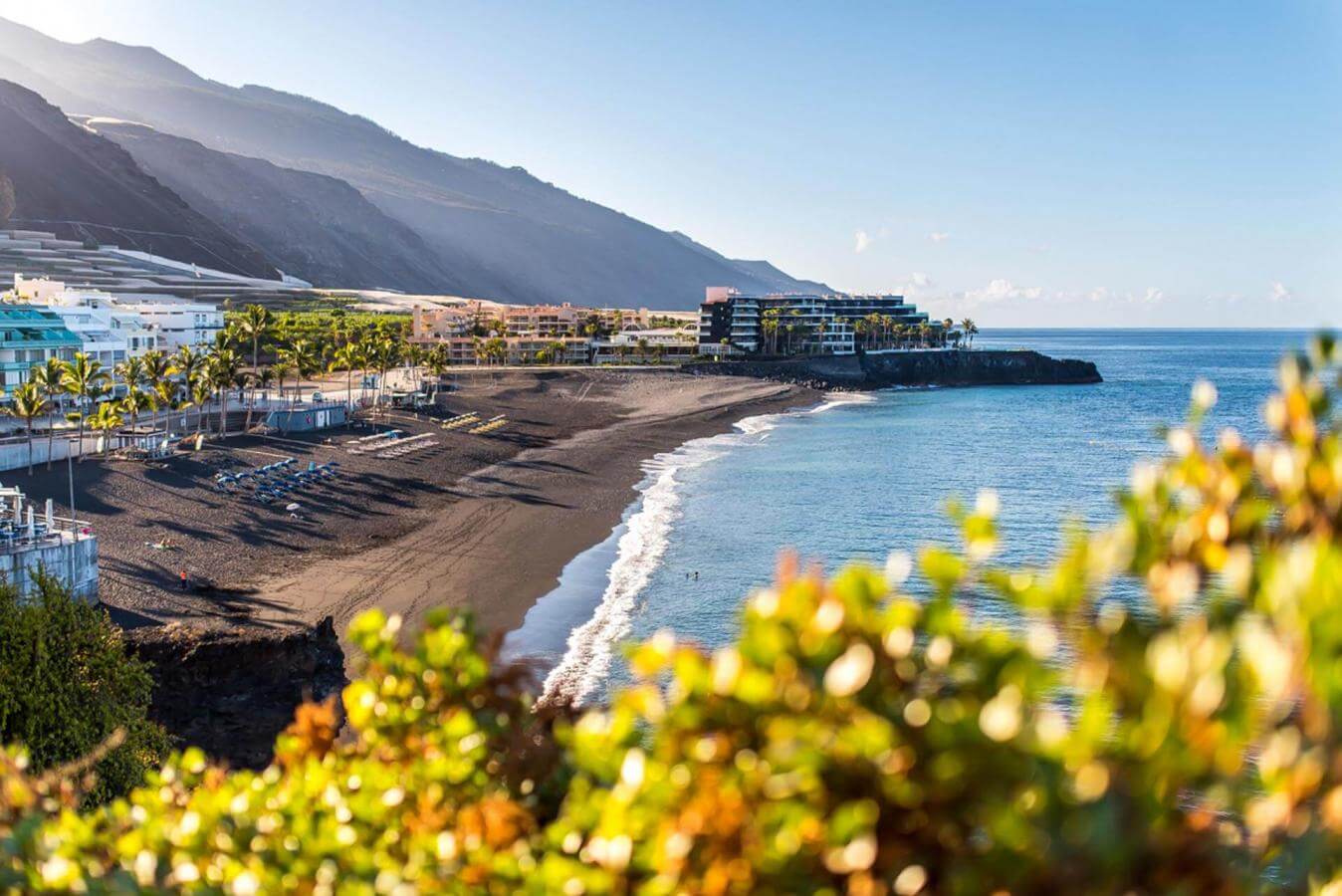

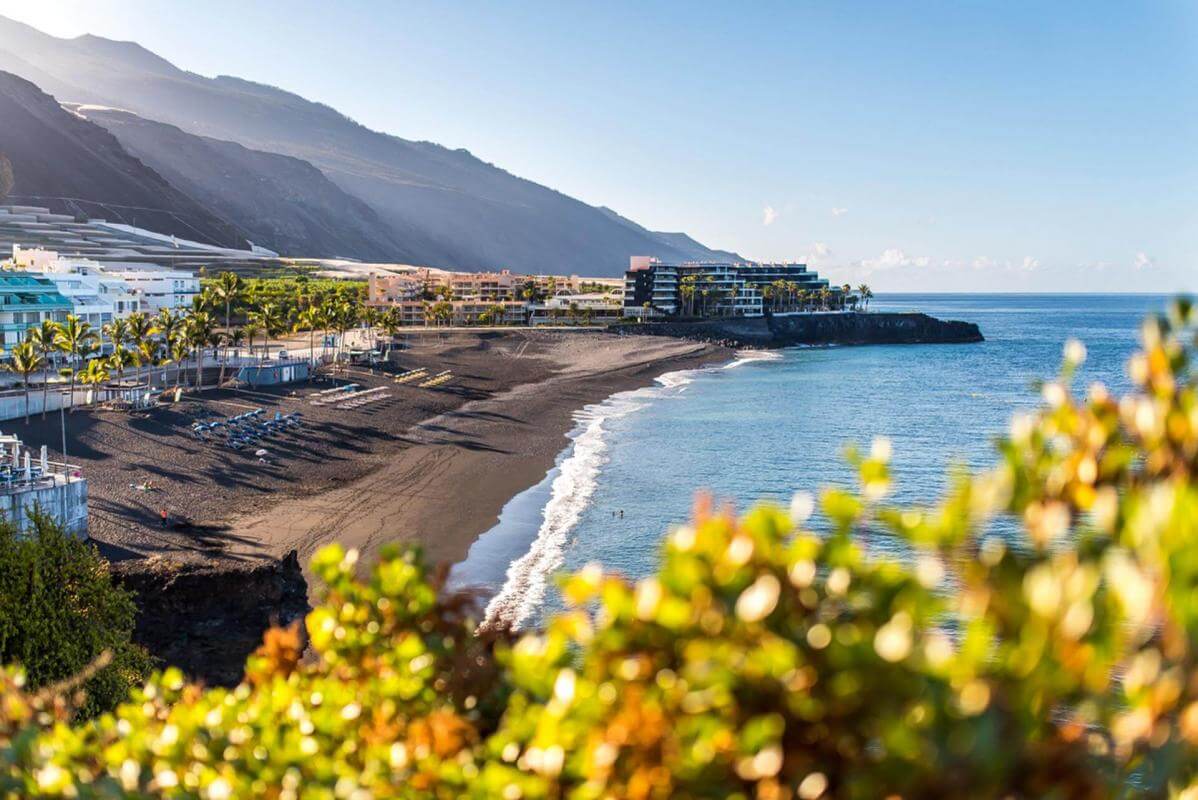
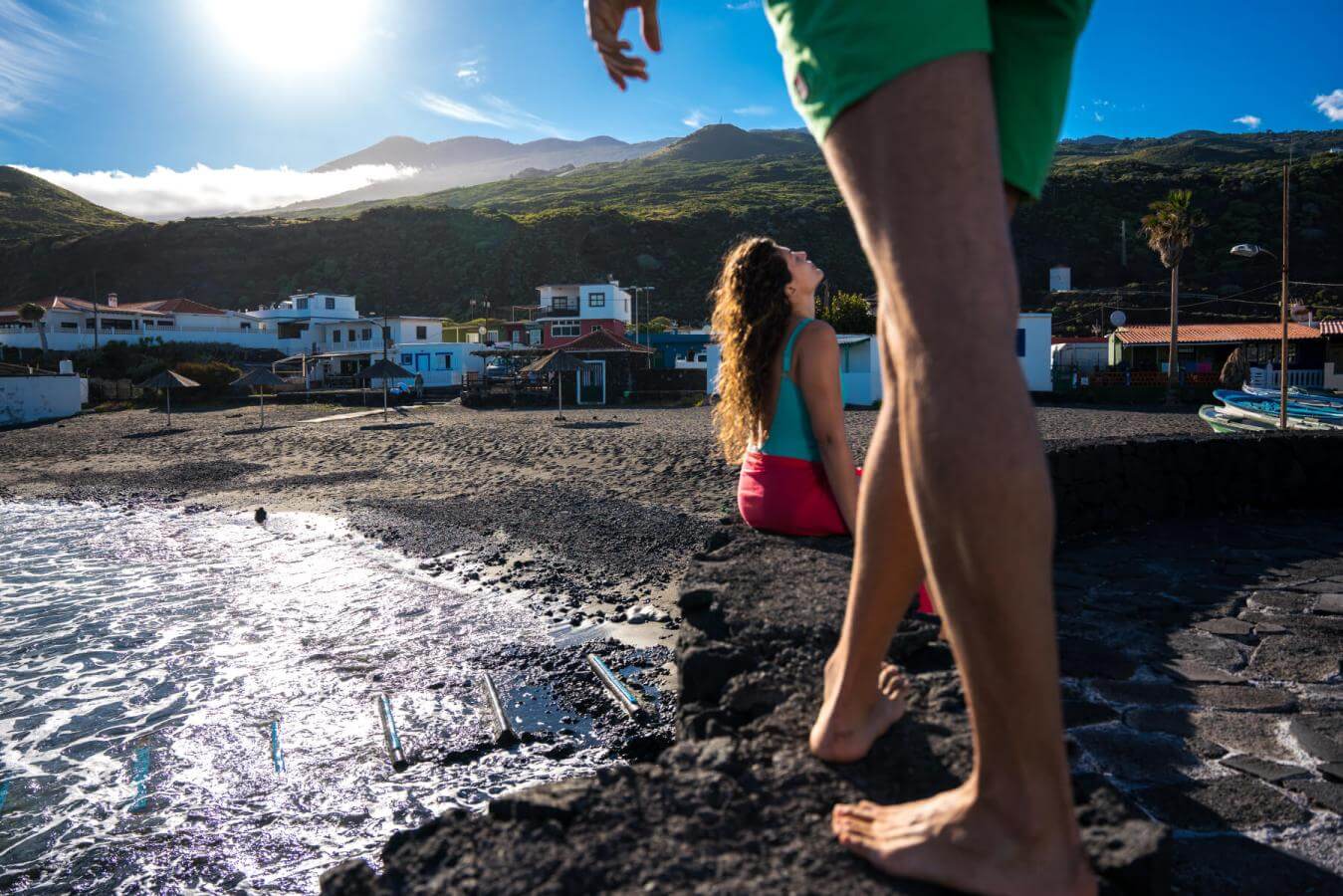

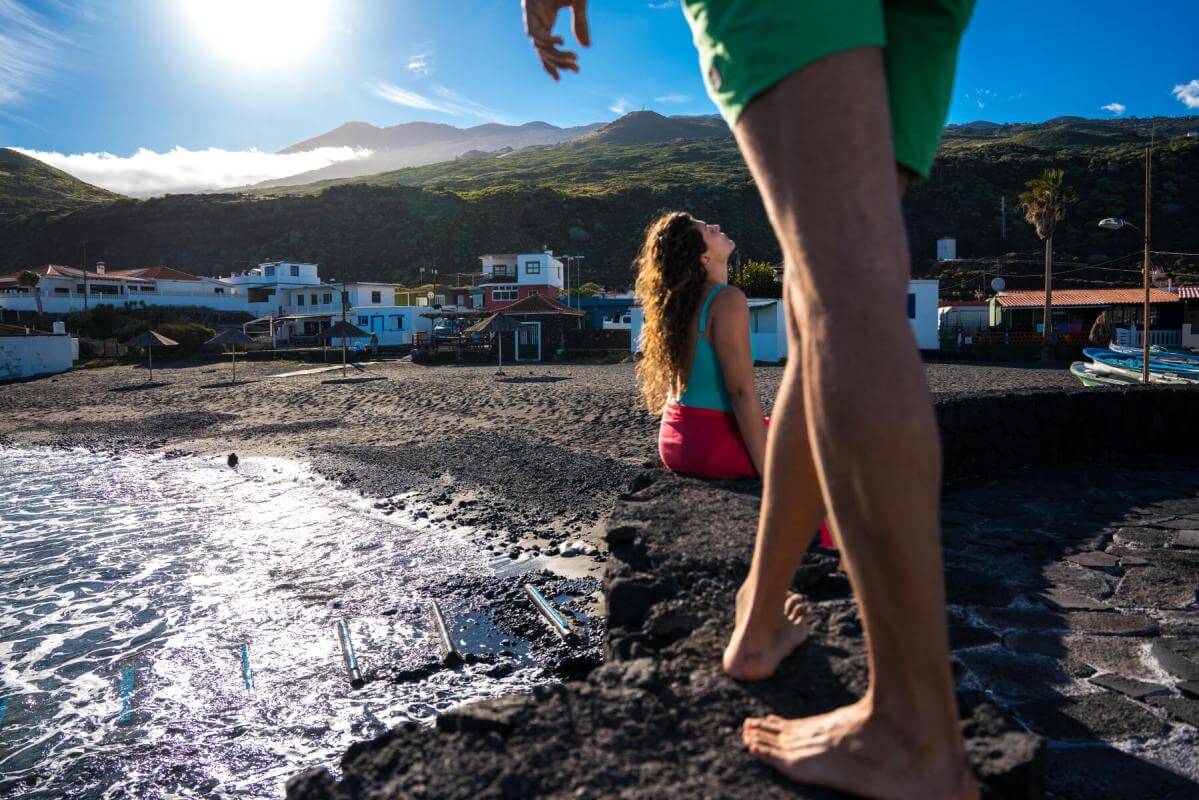
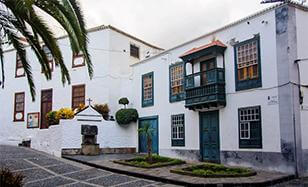
The island capital and a vital port on the historic route to America
Founded in 1493 by the Castilian conquistador Alonso Fernández de Lugo, known as ‘El Adelantado’, the capital of La Palma has always relied on its port and its connection to the sea. This route around the south of the island starts at a town closely related to America, reflected in the tradition of the Indianos - Spaniards who returned from Cuba after making their fortune there - in the architecture, above all the famous wooden balconies, and idiosyncrasies. The connection was so strong that in 1558 King Philip II created the first Juzgado de Indias, where all the Spanish ships sailing to the American colonies for commerce would have to register.
The relationship with the sea was also marked by the passage of pirates, like the famous Frenchman Peg Leg (François Le Clerc), who laid waste to the town in 1553. Its rich heritage in Renaissance, Baroque and Neo-Classical style, with the outstanding feature of the church of El Salvador, making it a perfect place for breakfast in the numerous bars, taverns and restaurants before getting in the car. The town’s cobbled streets, its two theatres (El Chico and El Circo de Marte) and its museums, like the naval museum, set up in a spectacular replica of the ship Columbus used to discover America, make this visit every bit as attractive as all that awaits you during the rest of the day.
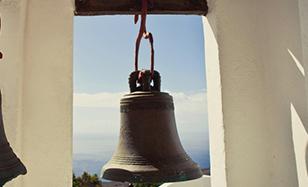
Visit to see the second-oldest Catholic wood carving in the Canary Islands
Setting out from the capital, over winding terrain that rapidly ascends the island’s steep inclination, the first stop on this route has to be at the sanctuary of Virgen de Las Nieves, the patron saint of La Palma. Affording excellent views, this enclave welcomes numerous visitors and bears witness to the admiration residents of La Palma feel for the second-oldest Catholic wood carving in the Canary Islands, which also has a connection to the indigenous peoples, as occurs with the virgin of Candelaria. The image is in late Romanesque style, modelled in polychrome terracotta. Its treasure and collection of jewels rank among the most valuable of the archipelago. Ever since 1676, the famous Bajada de la Virgen has taken place every five years, leading down to the church of El Salvador, in Santa Cruz, a tradition linked initially to a drought but which subsequently became established as one of the symbols of the island.
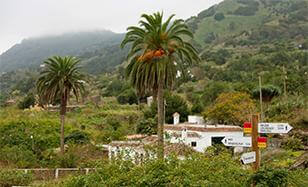
A tour of two villages with a rich heritage and cigar-making tradition
Heading south, a road without many straight stretches leads to towns like Buenavista de Arriba, with its permanent view of the nearby risco de La Concepción, which protects part of the capital and the port. Nevertheless, on this route we advise stopping at the adjoining village of Breña Alta, famous for its production of tobacco or internationally-prestigious traditional cigars from La Palma. If you would like to find out more about this activity, the cigar theme centre provides copious details.
This village, which has deep sporting roots, has grown in size over recent decades due to its tranquillity and a housing shortage in La Palma, resulting in many residents choosing to live in this area. But Breña Alta is also notable for its heritage. Its most striking jewels include the church of San Pedro Apóstol and the square of La Lealtad (Plaza de la Lealtad), from 1539. The church was first a chapel, and assumed its current form in 1680. Also exceptional are the numerous historical doorways of houses and estates, as well as stately mansions, in a town where agriculture has deep roots in the higher area, and with a wide range of rural tourism options.
While Breña Alta is ideal for a brief rest and breakfast, its sister town of Breña Baja also offers plenty of incentives for stopping. With attractive views of the Atlantic, accessed via a less-winding road, the town is home to the church of San José, built in 1548 and declared an Asset of Cultural Interest in the monument category in 1996. It contains the image of Saint Anne - a 16th-century Flemish carving - among others. Its quality of life, guaranteed sunshine and location close to the island capital have also made this village a residential favourite.
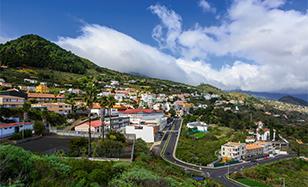
A town with a great tradition of openwork and carpets of flowers
Without the main road on our route becoming too complicated - which is unusual in the rest of the island - we come to the village of Mazo. The church of San Blas (1605) stands out from the local heritage, which is dotted with numerous well-conserved typical houses. From the square, one can contemplate excellent views of the ocean and part of the south of the island. In the old quarter, which has some cobbled streets, we also find the imposing museum Casa Roja, exhibiting the town's great tradition of embroidery and the Corpus Christi festival (held in September). During this fiesta, declared to be of National Tourist Interest, carpets of flowers are made.
If you continue south, but still within the town of Mazo, the Belmaco archaeological park with its different caves offers a glimpse of indigenous petroglyphs and enables us to see how the Benahoaritas, the island's Guanches, lived. A little later, the road shows us the malpaíses, or bad country, increasingly arid terrain from where one can glimpse the southern tip of La Palma, marked by the volcanoes of San Antonio and Teneguía.
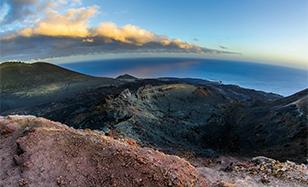
Visit to one of the last volcanoes to erupt in the Canary Islands (1971)
After passing through the last neighbourhood of Mazo (Monte de Luna), the route enters the driest part of La Palma, although it does pass through part of Cumbre Natural Park. The village of Fuencaliente offers wonderful views of the shapes left behind by the lava, thanks to volcanoes like those of San Antonio or Teneguía, one of the last ones to erupt in the Canary Islands (1971). The neighbourhoods of Las Caletas, Las Indias and even Los Quemados - although the latter lies a little lower down than the main road we propose - are perfect for having a bite to eat and enjoying impressive views of the Atlantic and the black volcanic terrain, flecked with reds and the green of the exceptional local agriculture. A camera is indispensable now, for immortalising scenes of many contrasts, with tall cliffs and a rugged coastline starting at the point where the road leaves the South East to ascend along the South West.
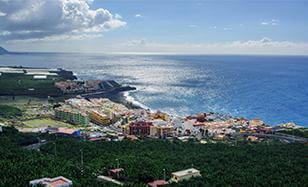
A coastal town with a beach and an attractive promenade where one can have drinks
The road is still mostly straight here, compared to the interior and the northern part of La Palma. From Las Indias, the views of the Atlantic are still impressive, although one can clearly discern the inaccessibility of part of the coast, above all in the area of the rock and headland of Los Guinchos. After passing villages like Jedey, we arrive in San Nicolás, and from here descend towards Las Manchas, after which it takes just a few minutes to reach Puerto Naos. The island’s second most popular tourist area offers an attractive beach of black volcanic sand, a near-100% guarantee of sunshine and the services one would expect of a resort with hotels and apartments, but nevertheless conserves its essence as a quaint fishing village, with banana plantations and other crops providing a touch of green. The terraces, bars, restaurants and shops on the seafront promenade and nearby streets are perfect for completing our route, having something to eat and bathing in the revitalising Atlantic Ocean.
- Never leave waste of any type lying around, including cigarette butts. Leftover food leads to a proliferation of rats and wild cats, which pose a serious threat to the fauna.
- Use the waste- paper baskets and, insofar as possible, separate and place your recycling waste in the appropriate containers.
- Do not throw any waste or other objects into the sea.
- Respect the animals. Do not bother them or feed them. If you see an injured specimen, you can call the emergency number: 112. Do not pick flowers or plants.
- Do not pick up or take away stones or any other item from the natural environment. And do not move them to pile them up into sadly famous 'towers'.
- In natural spaces and at viewpoints, do not leave the trail or the spaces designated for people to be in.
- Respect and look after the area's historic and cultural heritage, along with the public furniture and items for visitors, such as information panels or telescopes and binoculars.
- Drive carefully and responsibly.



